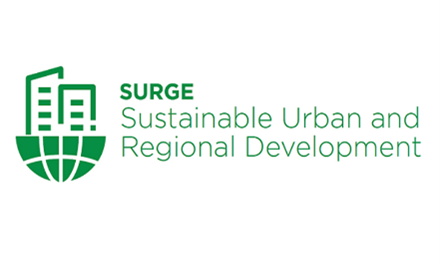 City of Užice, Serbia
City of Užice, Serbia
What makes a city resilient? Resilient cities have the ability to absorb, recover and prepare for future economic, environmental, social, and institutional shocks. They promote sustainable development and inclusive growth, as well as the well-being of their residents.
With around 55% of the country’s population, Serbian cities are well-positioned to deliver benefits from productivity growth to the nation. Improving urban development can unlock their potential to improve the quality of life for residents while becoming the engines of change toward a greener and more equitable future for the whole country.
Being major contributors to the country’s carbon footprint, Serbian cities also have the potential to shift the country’s economy to a greener and more sustainable path. However, to do so, they need improved strategic urban development and management in order to address the existing and emerging challenges.
In 2018, the country’s cities were among the main contributors of CO2 emissions in the Western Balkans— with more than 87% of CO2 emissions from fossil fuel combustion coming from Serbia, Montenegro, and Bosnia and Herzegovina. Serbia’s greenhouse gas (GHG) emissions grew by 10% over the past 10 years. Urban areas are also prone to natural hazards, which we expect to be exacerbated by global warming, especially in the poorest regions that have been in economic decline since the 1990s.
Cities in Serbia share several common problems —including inherited poor spatial planning, high levels of water and air pollution due to immature solid waste management systems, traffic congestion, significant underinvestment, and weak management of infrastructure. The existence of a bulk of common problems alongside the considerable development potential requires a shared strategic approach to improving urban development in Serbia.
The role of cities in Serbia’s green transition
Recognizing the role of cities in shifting towards a green transition, in 2019, Serbia approved its first Sustainable Urban Development Strategy (SUDS), followed by an action plan in 2021—laying the foundation for a comprehensive and integrated approach to a greener and more resilient development of its urban areas.
Since 2021, in collaboration with the Swiss Confederation and its State Secretariat for Economic Affairs (SECO), the World Bank has been supporting Serbia in its efforts to achieve a more sustainable urban development through the Green, Livable and Resilient Cities in Serbia Program, as part of the Sustainable Urban and Regional Development, SURGE Umbrella Global Program.
The Program strengthens the capacity of the government of Serbia and its selected municipalities to plan more sustainable, inclusive, and resilient urban development and local economic recovery in the lagging regions. Support is being provided through a set of activities which include analysis of the legal framework, detailed city assessments, demographic analysis, capacity building, and policy advice. For example, analyses of solid waste management focus on key challenges in the sector, identifying gaps in knowledge and data, and proposing areas and topics for further support and collaboration at both the national and local levels.
Some of the Program’s results
Our team has identified several systemic institutional challenges at the national and local levels that hinder the successful implementation of SUDS. They include the lack of human, organizational and financial resources, as well as the lack of capacity of the decision-makers and the administrative staff for strategic planning. The latter has resulted in the lack of alignment between the priorities set by SUDS and local development plans of urban areas.
We then selected 10 secondary and medium-sized cities—Novi Sad, Niš, Kragujevac, Zrenjanin, Kraljevo, Novi Pazar, Leskovac, Užice, Sombor, and Šabac —that will be the main beneficiaries of the Program at the local level, based on the criteria agreed with Serbia’s Ministry of Construction, Transport and Infrastructure and members of the Program’s National Coordination Committee. A detailed assessment (City Scan) of the needs and gaps is being finalized.
Assessment of the 10 selected cities has been based on seven pillars covering planning, services, climate change and resilience. Its preliminary results have shown that cities have common development challenges requiring infrastructure modernization as well as capacity building of the city planners to adequately address the existing bottlenecks and better plan for more resilient and inclusive growth.
One example is the city of Užice, where the administrative and economic center of the biggest region in southwest Serbia with a population of over 78,000 people —the bottlenecks identified include traffic congestion, lack of parking and green spaces, informal residential construction, and lack of wastewater systems. Among its biggest challenges is the inadequacy of the rain drainage system, which does not have the capacity to receive heavy rains, increasing the risk of flooding. The Program will support the Uzice urban planners in addressing some of these by building their capacity in specific areas and offering on-job training while incorporating the notion of disaster resilience into the city’s strategic documents and plans.
The Program has also supported knowledge exchange through study visits, city-to-city peer learning, and technical deep dives. In October 2022, representatives of the Serbian city of Niš participated in a technical exchange visit to Croatia. Niš is the third largest city in Serbia and has embarked on a new planning cycle (developing new general and spatial plans) in 2022. The study visit agenda was based on the points of interest identified by the Niš City Administration including integrating strategic and spatial planning, and waterfront investments, and flood protection.
Going forward
 Serbian cities have the potential to build their resilience to external shocks—and grow greener, more inclusive and livable for their residents. Improved strategic planning and a comprehensive approach to city planning are key for the successful realization of this ambitious goal set by the Serbian government. From our side, the World Bank will continue supporting the Serbian cities on this path through our diagnostics, knowledge sharing, and policy advice.
Serbian cities have the potential to build their resilience to external shocks—and grow greener, more inclusive and livable for their residents. Improved strategic planning and a comprehensive approach to city planning are key for the successful realization of this ambitious goal set by the Serbian government. From our side, the World Bank will continue supporting the Serbian cities on this path through our diagnostics, knowledge sharing, and policy advice.
Related Links:



Join the Conversation